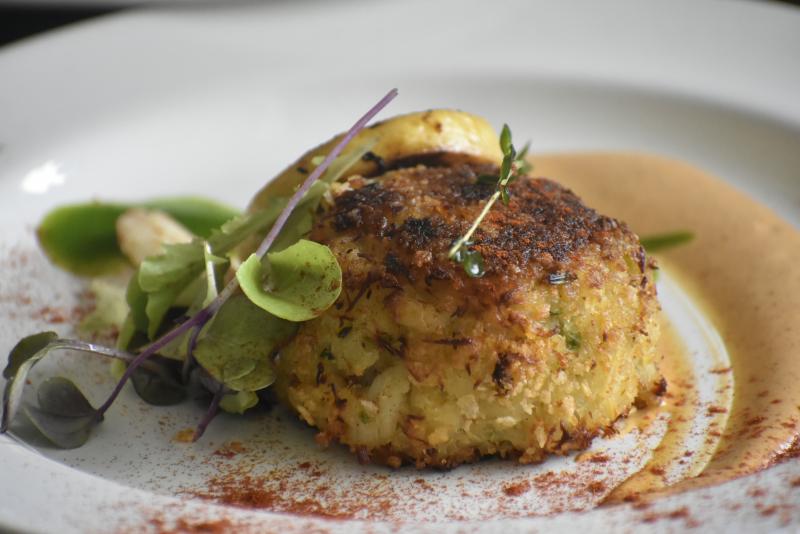jumi.indah.link
 Seafood is the world’s most highly traded food commodity, by value, and the product is hard to track from source to market. Reports of seafood mislabeling have increased over the past decade, but few studies have considered the overall environmental effects of this deceptive practice.
Seafood is the world’s most highly traded food commodity, by value, and the product is hard to track from source to market. Reports of seafood mislabeling have increased over the past decade, but few studies have considered the overall environmental effects of this deceptive practice.
A study by Arizona State University, the University of Washington and other institutions examined the impacts of seafood mislabeling on the marine environment, including population health, the effectiveness of fishery management, and marine habitats and ecosystems.
The results, recently published in the Proceedings of the National Academy of Sciences, show that some 190,000 to 250,000 tons of mislabeled seafood are sold each year in the U.S., making up 3.4% to 4.3% of all the seafood consumed. Farmed Atlantic salmon, often labeled and sold as Pacific salmon or rainbow trout, is the second-most-consumed mislabeled seafood product in the U.S., just behind shrimp.
Co-author Sunny Jardine, an assistant professor in the UW School of Marine and Environmental Affairs, helped to design a statistical analysis to compare the product on the label with the one that was actually consumed.
“It’s important to consider mislabeled consumption, rather than mislabeling rates, when thinking about the various biological and environmental impacts of mislabeling,” Jardine said.
“You can have a species that’s mislabeled the majority of the time, but if the consumption of that species is low, then the amount of the mislabeled product consumed is also low, and it may not be as big of a management concern.
“On the other hand, you can get products with low mislabeling rates and high consumption, meaning that a lot of the mislabeled product is being consumed. We find this is the case for giant tiger prawns being sold as white leg shrimp, and for Atlantic salmon being sold as Pacific salmon.”
The authors used the Monterey Bay Aquarium Seafood Watch program that assesses about 85% of seafood consumed in the U.S. and offers consumer recommendations for more sustainable choices. The authors combined those scores with mislabeling and consumption rates to compare the population health and fishery management of the species actually consumed versus the one on the label.
Genetic techniques can tell whether a seafood product is being marketed as a similar, higher value species, a switch that can happen at many points in the supply chain.
The most widely-consumed mislabeled product is shrimp, the most popular seafood in America. Imported giant tiger prawns, that are in Seafood Watch’s “Avoid” category, can end up labeled as white leg shrimp, in the “Best” category.
Salmon came in second on the amount of mislabeled seafood consumed. Farmed Atlantic salmon, in the “Avoid” category, can end up labeled as Pacific salmon or rainbow trout, typically in the “Best” or “Good” category.
More generally, the study shows that false labeling tends to substitute a less sustainable product. Substituted seafood was 28% more likely to be imported from other countries, which often have weaker environmental laws than the ones covering the domestic seafood listed on the label.
“In the United States, we’re actually very good at managing our fisheries,” said lead author Kailin Kroetz, an assistant professor at Arizona State University’s School of Sustainability. “We assess the stock so we know what’s out there. We set a catch limit. We have strong monitoring and enforcement capabilities to support fishers adhering to the limit. But many countries we import from do not have the same management capacity.”
In 86% of cases, substitutes for wild-caught species came from fisheries that performed worse in terms of population impacts — species abundance, fishing mortality, and bycatch and discards — than the species on the label. Mislabeling also tended to disguise bad management practices: 78% of the substituted seafood had lower fishery management effectiveness than the product listed on the label.
“The expected species is often really well managed,” Kroetz said.
Public attention has tended to focus on frequently mislabeled species even if Americans consume less of those products.
“There’s been a lot of media attention given to the mislabeling rates of a particular species, such as halibut and snapper,” Jardine said. “But a big-picture analysis shows that we should also focus on other species if we are concerned about the environmental impacts.”
The effects of seafood mislabeling are not just environmental, the authors write, but also economic and social, affecting seafood consumers and the sustainable fishing industry.
“If the seafood sustainability movement was better integrated with seafood mislabeling testing, rate estimation and regulatory tracing programs, we could provide the consumer with better information regarding the biological, social and economic implications of the products that they consume,” Jardine said.
The study was funded by the Paul M. Angell Family Foundation and Resources for the Future. The work was also supported by the National Socio-Environmental Synthesis Center in Annapolis, Maryland, with funding from the National Science Foundation.
Other co-authors are Patrick Lee, Katrina Chicojay Moore and Andrew Steinkruger at the Washington, D.C.-based nonprofit Resources for the Future; C. Josh Donlan and Gloria Luque at the Williamsburg, Virginia-based nonprofit Advanced Conservation Strategies; Jessica Gephart at American University; and Cassandra Cole at Harvard University.
For more information, contact Jardine at jardine@uw.edu or Kroetz at kailin.kroetz@asu.edu.
Adapted from an ASU press release. See also a press release from Advanced Conservation Strategies.
Source: University of Washington
atlantic, bait and switch, environment, food, mislabeling, pacific, salmon, seafood, shrimp, study
The Link Lonk
December 30, 2020 at 04:54PM
https://ift.tt/3pyaXJi
Bait and Switch: Mislabeled Salmon, Shrimp Have Biggest Environmental Toll - Alaska Native News
https://ift.tt/3eNRKhS
shrimp



:no_upscale()/cloudfront-us-east-1.images.arcpublishing.com/dmn/GK4ZY4OMQRBKNG6THNTD3EIY2I.jpg)
/cloudfront-us-east-1.images.arcpublishing.com/dmn/6JHPCNZ7PNAK3FLB7HW2XZIS6I.jpg)
/cloudfront-us-east-1.images.arcpublishing.com/dmn/MEFEQ4OVWNBXFAELYJLRYAYDXU.jpg)






















